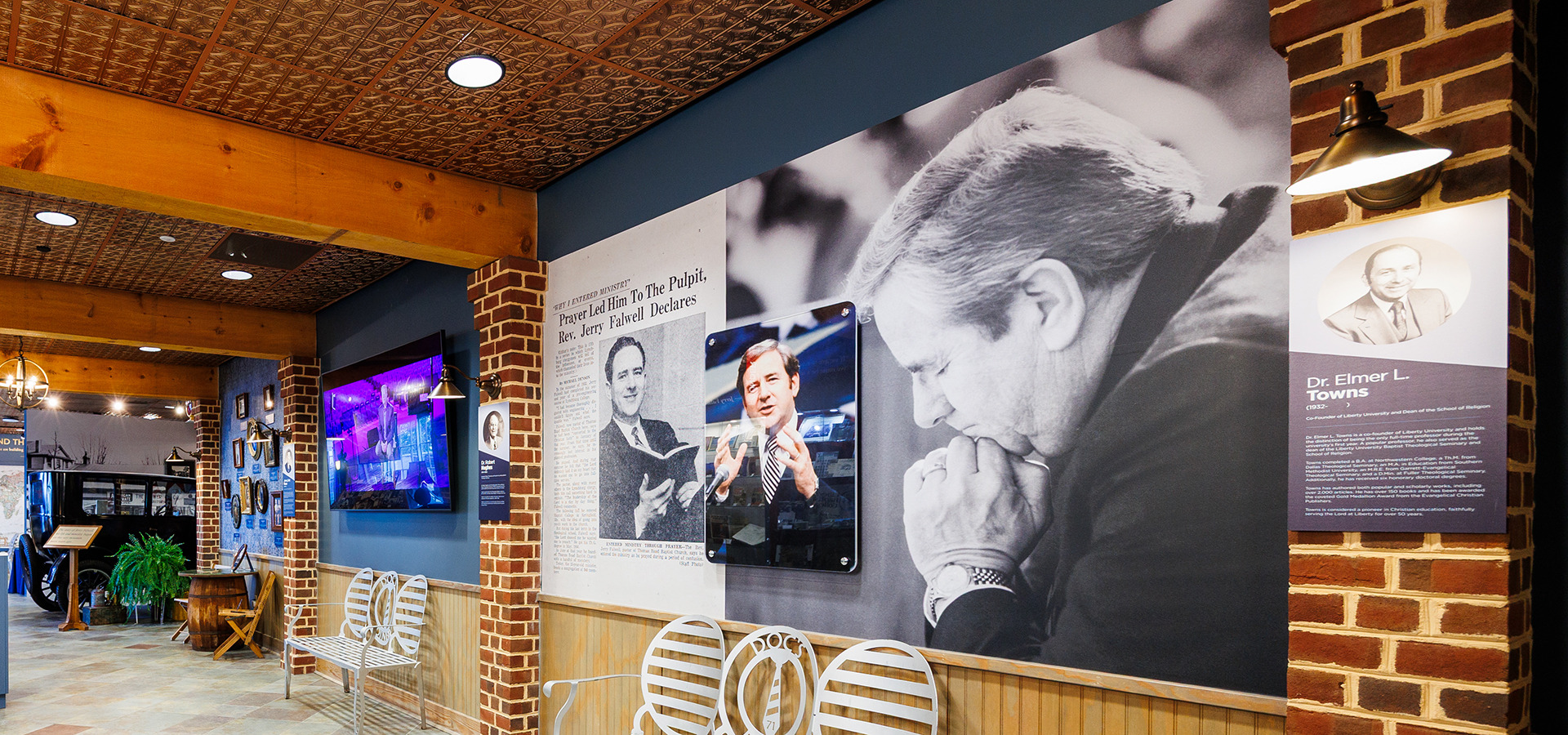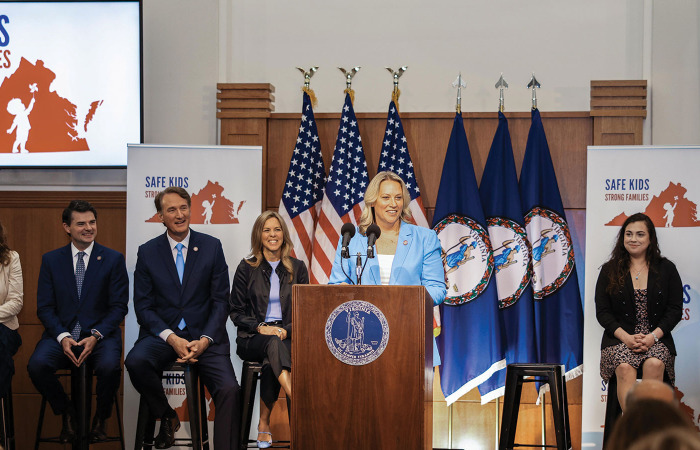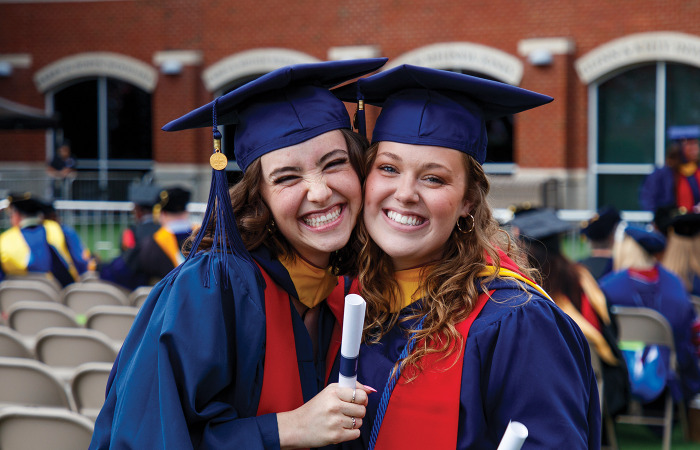The present standing of Liberty University as an epicenter of excellent faith-led education, impactful Christian outreach, and competitive athletics is the result of many steps of faith, big and small, made by countless leaders and pioneers over the decades, ultimately led by the vision and steadfastness of its late founder, Dr. Jerry Falwell. Charting the path that formed and grew Liberty and its related ministries, the Jerry Falwell Museum has settled into its new location on the lower level of the Hancock Welcome Center, filled with artifacts and information that can help visitors learn or reminisce about Falwell’s life, faith, and work.
“Something we hear a lot when people come here is, ‘I didn’t know that!’ I love it when people say that,” curator Michelle Marttila said. “It’s great when visitors can come here and learn something new about Liberty or our founder or Thomas Road Baptist Church (where Falwell was the founding pastor). I think coming here reminds them that the Lord can answer prayer and lead them. As we learn more about the history ourselves, we’re always in awe of our founder, the vision the Lord gave Him, and his faithfulness in the Lord.”
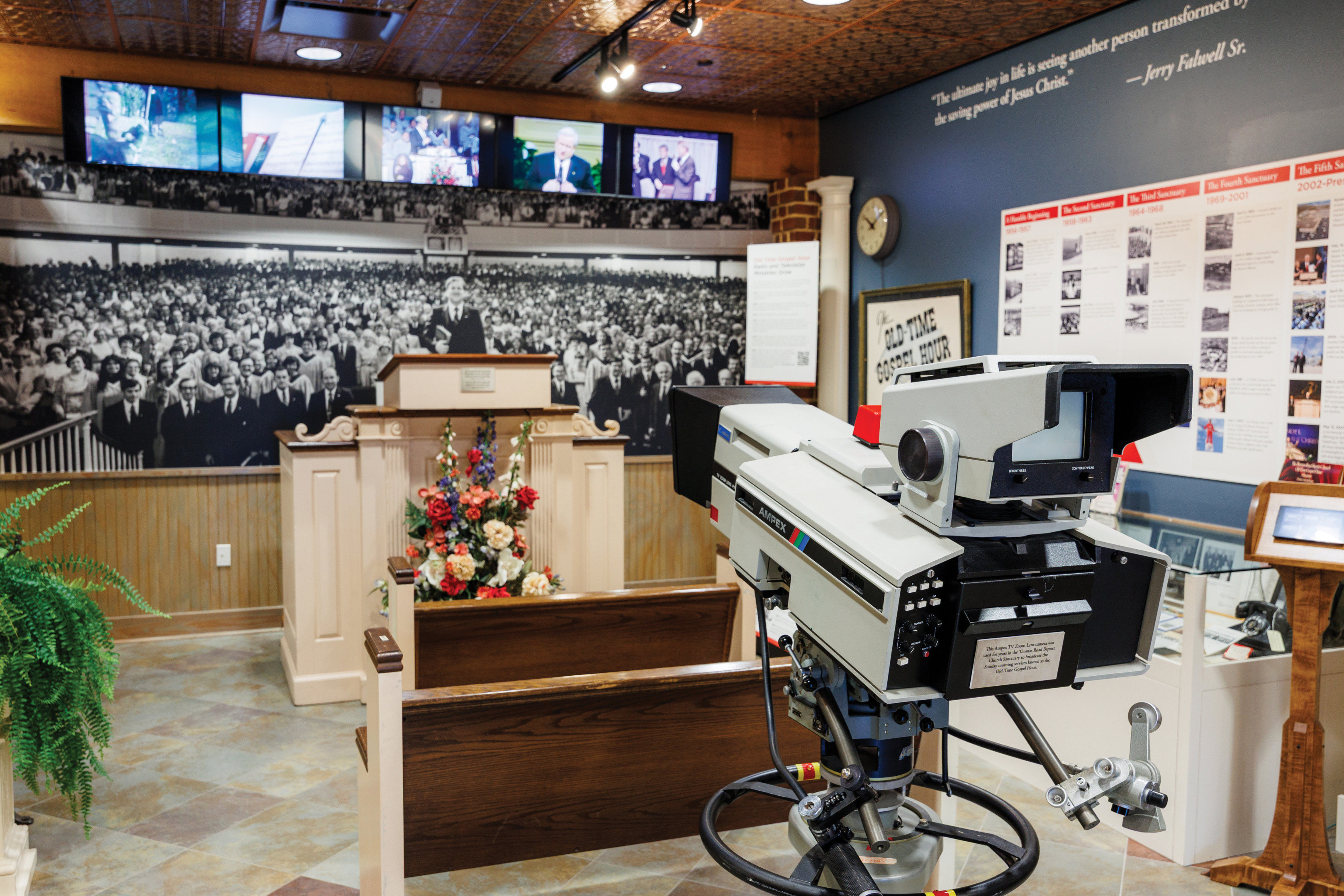
One of the core pieces is a pulpit Falwell used from the 1980s until 2006.
The museum’s new home makes it an ideal stop on a visit to campus, located just a few steps away from where the Champion Center is currently being constructed.
The museum first opened in the Grand Lobby of DeMoss Hall in 2003, on Falwell’s 70th birthday, and has grown thanks to donations from the Falwell family, alumni, and friends from around the world. There’s something to discover around every corner: a pulpit Falwell used from the 1980s until 2006, an original Sparky mascot suit, a camera from the “Old Time Gospel Hour” television program, and a replica of the bridge that students used to get to Treasure Island, an island on James River in downtown Lynchburg where some dormitories and athletic facilities were located in Liberty’s early years.
Marttila said some of her favorite recent additions are a communion set used at Thomas Road Baptist Church in the 1950s (when services were held inside an old soft drink bottling company) and a desk from Falwell’s childhood that he still used in his early years of ministry.
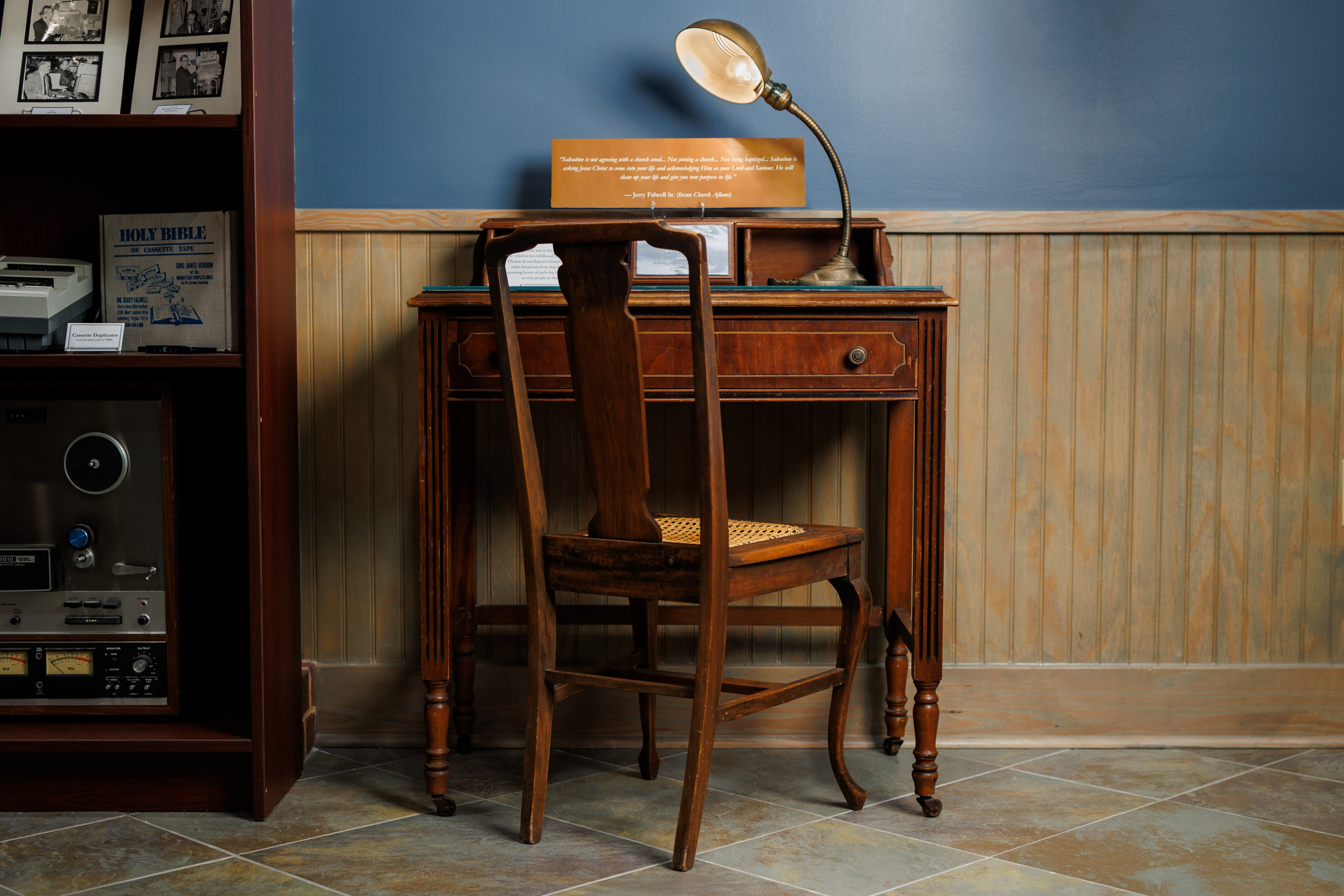
One humble but noteworthy piece in the museum is a desk used by Falwell as a child and in his early ministry.
While many of the exhibits will remain the same throughout the year, a large glass display case will feature themed selections that rotate in and out over time, such as Commencement regalia from across the decades and artwork by Macel Pate Falwell. The evolving display will feature pieces usually stored in the Jerry Falwell Library Archives & Special Collections.
Some museum pieces with ordinary appearances carry special stories. Nissi Cui (’85) was a student who, after speaking with Falwell on campus one day, shook his hand and walked away only to look down to see a folded $100 bill in his palm. He never spent it, carrying it for all these years as a symbolic reminder of the faithfulness of God and Falwell’s giving heart. In 2022, he contacted Marttila, saying he felt the bill belonged to Liberty, and donated it to the museum to be displayed as a reminder to others.
“That’s one of so many stories of how our founder encouraged people and made an impact on their lives,” Marttila said.
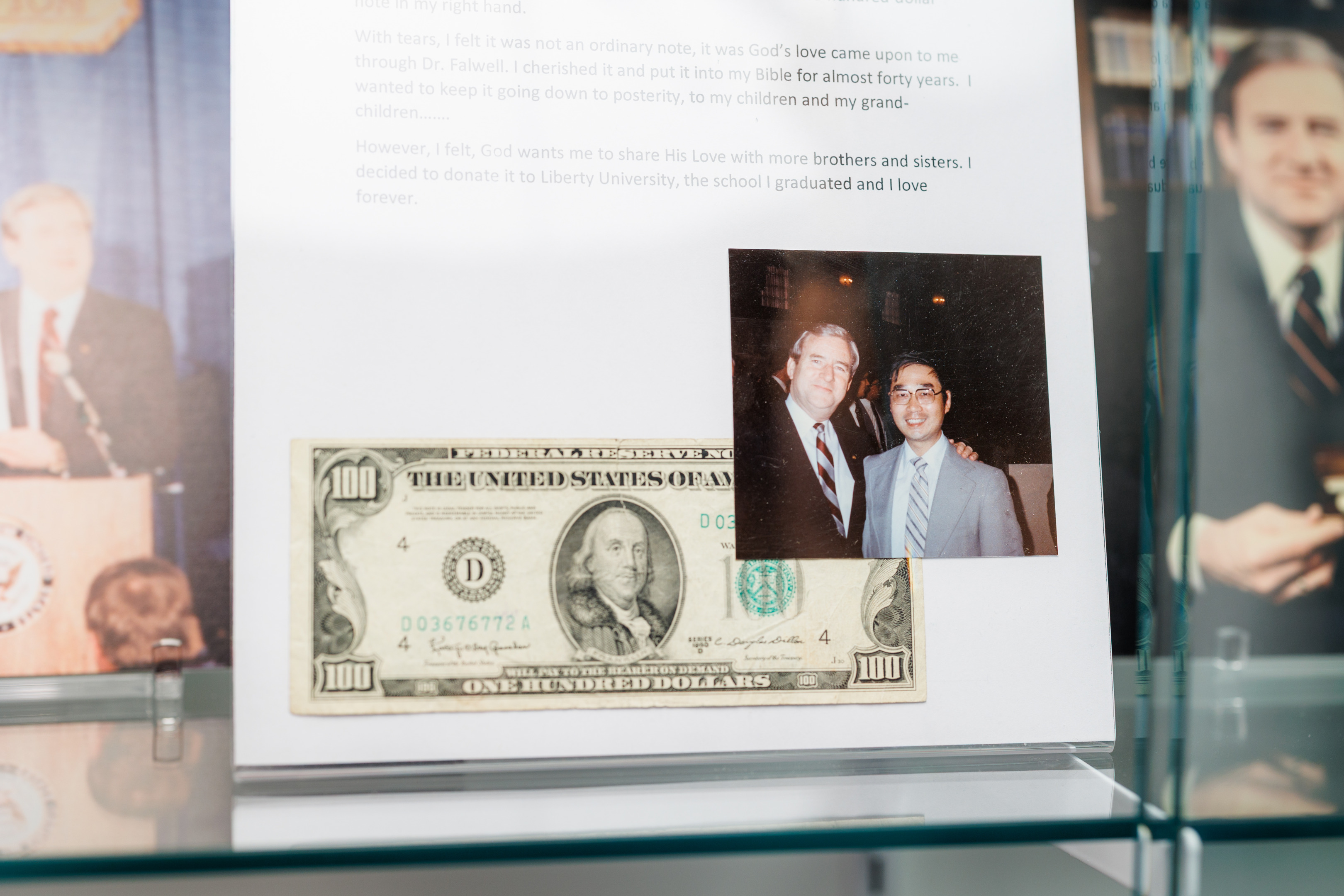
Nissi Cui’s $100 bill is on display after he donated it to the museum in 2022.
An alumna herself, earning a bachelor’s degree in communications in 1991 and master’s degree in counseling in 1997, Marttila said she feels a responsibility and privilege in her role as curator. She began working with the museum in 2013 and became curator in 2022.
“Having met a lot of the people who have gone to Heaven like Jerry and Macel Falwell and seeing the work that they have done, I’m honored to be someone who can continue educating people about our history and sharing what has happened,” Marttila said. “It truly is an honor, and we just want to make sure the legacy is alive for future generations. That’s what keeps me coming in every day.”
The throughline of the museum’s contents, Marttila said, is a story of prayer. She cited a landmark moment in Liberty’s early history: a snowy prayer gathering in 1977 in which Falwell led students and faculty in prayer seeking God’s provision for the first campus buildings.
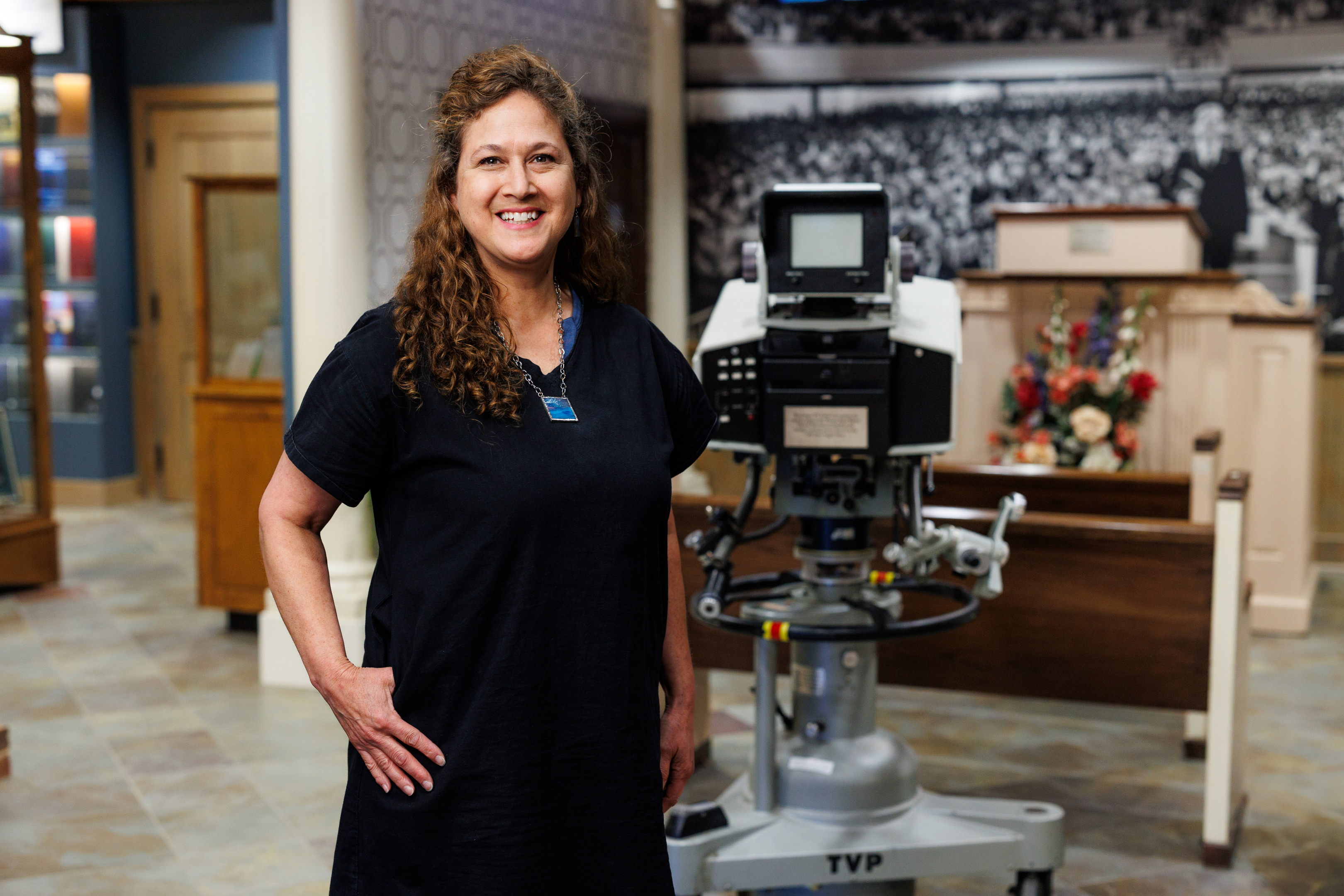
Michelle Marttila has been the museum’s curator since 2022.
“I remember how Jerry Falwell would ask us for prayer requests and would always follow up with us. I really learned about the power of prayer and fasting from his example,” she said. “In being here on campus, I’ve seen answers to prayers, and a lot of alumni can attest to that. There are the students from the 1970s who were there at the prayer meeting in the snow, those who have seen the miracles of money coming in and paying off debts, and those who have watched the rise of the campus we have today.”
“The Lord used one man, an ordinary man with an extraordinary vision, who was faithful in seeking the Lord and taking the steps to pursue that vision,” Marttila added. “I think those who come here to the museum can be inspired by that, and they can be motivated to do what they can for the Kingdom of God.”
The Jerry Falwell Museum is open Monday through Friday from 8 a.m. to 4:30 p.m. and Saturday from 10 a.m. to 2 p.m. For more information, contact the museum at JerryFalwellMuseum@liberty.edu or (434) 582-7578. You can also visit the museum’s Facebook and Instagram pages.
DID YOU KNOW?
Many museums and special displays on campus are open to the public, including the Rawlings Scriptorium, Chaplains Museum, Liberty University Art Museum, Creation Studies Display, and the Jerry Falwell Library Archives & Special Collections. Learn more at Liberty.edu/Museums.
